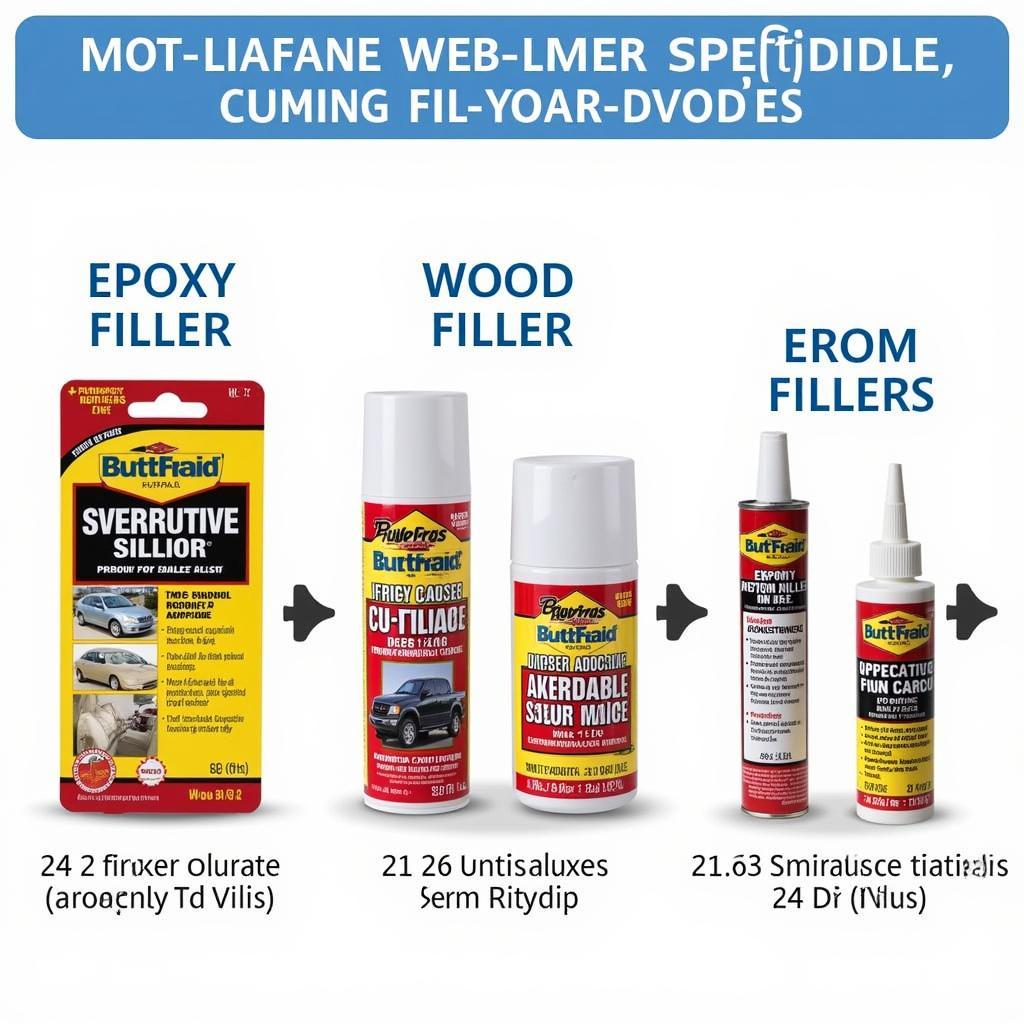Car body filler for wood repairs is a crucial process for restoring classic cars and wooden-bodied vehicles. Understanding the nuances of this technique ensures a seamless and durable repair. This guide dives into the essentials of using car body filler on wood, offering practical advice and expert insights for both beginners and seasoned restorers.
Choosing the Right Car Body Filler for Wood
Not all car body fillers are created equal, especially when it comes to wood repairs. Standard body fillers designed for metal can react negatively with wood, causing cracking or poor adhesion. Opt for a two-part epoxy-based filler or a specialized wood filler formulated for automotive applications. These fillers offer superior flexibility and bonding strength, crucial for accommodating wood’s natural movement and preventing future issues.
What kind of wood are you working with? Solid wood requires a different filler than plywood or veneer. For solid wood, a flexible, non-shrinking filler is ideal. Plywood and veneer may benefit from a slightly more rigid filler to prevent sagging.
Preparing the Wood for Filler Application
Proper surface preparation is paramount for successful wood filler application. Begin by sanding the damaged area to remove any loose or rotted wood. A clean, dry surface is essential for optimal adhesion.
If the wood is particularly dry or porous, consider applying a wood sealer before filling. This helps prevent the filler from absorbing into the wood and ensures a more uniform finish.
Applying Car Body Filler to Wood
Mix the two-part epoxy filler according to the manufacturer’s instructions. Work quickly, as the filler begins to harden relatively fast. Apply the filler in thin layers, using a flexible spreader to achieve a smooth, even surface. Overfilling can lead to cracking, so it’s best to build up the filler gradually.
Allow each layer to dry completely before applying the next. Once the final layer has cured, sand the area smooth, blending it seamlessly with the surrounding wood.
Finishing and Painting the Repaired Wood
After sanding, you’re ready to prime and paint. Choose a primer designed for wood and compatible with the paint you intend to use. Apply several thin coats, allowing each to dry thoroughly before the next. Finally, apply your chosen paint, again in thin coats, to achieve a professional, long-lasting finish.
What if you’re repairing a vintage car with a specific wood grain? You can recreate the wood grain using specialized wood graining tools and techniques. This requires patience and practice but can yield impressive results.
“When working with wood fillers, less is more,” advises John Smith, a renowned automotive restoration expert. “Build up the filler gradually to avoid cracking and ensure a smooth, even finish.”
Conclusion
Car body filler for wood repairs is a valuable technique for restoring damaged wooden components on cars and other vehicles. By choosing the correct filler, preparing the surface properly, and applying the filler with care, you can achieve professional-looking results that will stand the test of time. Remember to always follow the manufacturer’s instructions and prioritize safety throughout the process. Using car body filler for wood repairs requires attention to detail, but the results are well worth the effort.
FAQs
- Can I use regular car body filler on wood?
- What type of filler is best for repairing rotted wood?
- How long does it take for car body filler to dry on wood?
- How do I sand car body filler on wood?
- What type of paint should I use over car body filler on wood?
- How can I prevent the filler from cracking?
- Can I stain over car body filler on wood?
“Matching the original wood grain can be challenging, but it’s essential for maintaining the authenticity of a classic car,” adds Jane Doe, a seasoned automotive painter. “Take your time and practice on scrap wood before tackling the actual repair.”
You might also find these articles helpful: car body repair paints fillers, car body repair woodbridge.
Additional questions might include: How to repair large sections of damaged wood? What are the alternatives to car body filler for wood repairs? Check out our article on car body rust repair near me for more information on rust repair, and car body repair near great harwood for local repair options.
For a step-by-step guide to car bodywork repair, visit our car bodywork repair walk through.
Need help with your car repair? Contact us via WhatsApp: +1(641)206-8880, or Email: [email protected]. Our customer service team is available 24/7.



